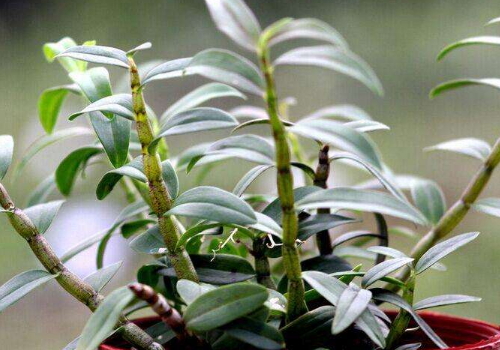What kind of plant planting method does sunflower belong to
Sunflower's function is huge, we can eat melon seeds edible oil and so on are from sunflower, then sunflower belongs to what plant? Sunflower planting method?
What kind of plants are sunflowers:
Sunflowers belong to angiosperms. Sunflower belongs to angiosperm in classification, its fruit is achene, commonly known as sunflower seed, edible. The fruit consists of pericarp, seed coat and embryo. Edible seed is longer, pericarp black and white stripe is the majority, pericarp thick, accounting for more than 40% of seed weight, 100 - 200 grams. The seed of oil type is shorter, the pericarp is mostly black, the skin is thin, about 20~30% of the seed weight, and the 1000-grain weight is 40~ 110g.

Sunflower planting methods:
1. Land selection and preparation: Sunflower cultivation should choose land with flat land, medium fertility, convenient irrigation and drainage, relatively small soil viscosity, and should not be continuous cropping. Progeny is propagated by seed, and peat soil is suitable for sowing. Seed dressing with new lipid membrane before sowing can repel underground pests, isolate virus infection and improve seed germination rate.
2, timely sowing: sunflower sowing time is generally 3~4 months, the appropriate temperature for sowing is 18~25℃, usually about 5~7 days after sowing germination. The basic principle of sowing date selection is to sow early or late according to the law of saline-alkali occurrence, so that seedlings can avoid saline-alkali damage. Spring or summer sowing is carried out according to the growth period of the variety.
3. Check and supplement seedlings: Sunflower is a dicotyledonous crop, and it is difficult for the top soil to emerge. In addition, the soil preparation, sowing quality is not high or the topsoil is hardened in rain after sowing, or diseases, insects, rats, birds, etc. are harmful, which are easy to cause lack of seedlings and broken ridges. In order to ensure that a full seedling, must be in the emergence period field by row inspection, row by row missing seedlings to timely re-planting.
4, thinning seedlings: sunflower cultivation should be thinned early, to prevent seedlings crowded seedlings, affecting the cultivation of strong seedlings, and even later yield, as for saline-alkali land and heavy pest plots, seedling time can be appropriately postponed. At the same time, sunflower should also set seedlings early, conducive to the cultivation of strong seedlings, but also conducive to the development of flower disk, set seedlings should be carried out in 2 pairs of true leaves.
5. Intertillage and weeding: Sunflower generally has the functions of weeding and loosening soil, breaking hardening, keeping water content, reducing evaporation, reducing saline-alkali damage, etc. for 2~3 times of intertillage. The first intertillage is carried out in combination with thinning and seedling determination when 1~2 pairs of true leaves are planted. The second intertillage is carried out one week after seedling determination. The third intertillage is completed in combination with ditching, cultivating soil and fertilizing before ridge sealing.
6, ditching topdressing: sunflower is more fertile, ditching topdressing is usually carried out in the third time of cultivation, mainly nitrogen and phosphorus fertilizer, 5 kg of diammonium phosphate per mu, 10 kg of urea, mixed evenly into the soil. Furrowing and cultivating soil can effectively ensure the growth and development of secondary roots, prevent lodging and reduce basal branches below cotyledon nodes.
7. Timely irrigation: Sunflower irrigation adopts furrow irrigation method. Generally, for varieties with plant height of 1.5 meters, the first water should be carried out at the bud stage, the second water should be carried out at the initial flowering stage, and the third water should be carried out at the filling stage. For varieties with plant height of about 2 meters, first watering was carried out 4~5 days before flowering (severe drought, irrigation in advance), second watering was carried out 6~7 days after first watering, and third watering was carried out at filling stage.
8. Pollination management: sunflower self-pollination seed setting rate is low, cross-pollination seed setting rate is high, artificial auxiliary pollination should be carried out in time during cultivation, pollination should be carried out by means of flower disk, powder puff, cotton glove, etc., or male parent pollen should be collected and gently smeared on female stigma with small brush, pollination should be carried out 3~4 times in full bloom.
All right, guys, you know how sunflowers grow.
What plants are sunflowers?
Sunflower can be divided into general ornamental species and edible varieties, general ornamental species characterized by shorter plants, usually no more than half a meter, so suitable for planting in potted plants, edible varieties are taller plants, planted in general open-air nursery soil, can grow to more than 2 meters, let's take a look at what sunflower belongs to!
What plants are sunflowers?
Sunflowers belong to angiosperms. Sunflower belongs to angiosperm in classification, its fruit is achene, commonly known as sunflower seed, edible. The fruit consists of pericarp, seed coat and embryo. Edible seed is longer, pericarp black and white stripe is the majority, pericarp thick, accounting for more than 40% of seed weight, 100 - 200 grams. The seed of oil type is shorter, the pericarp is mostly black, the skin is thin, about 20~30% of the seed weight, and the 1000-grain weight is 40~ 110g.
Why do sunflowers face the sun?
Sunflower stems contain a wonderful plant auxin, this auxin is very afraid of light, a light exposure will go to the backlight side, but also stimulate the backlight side of the cells to reproduce rapidly, so the backlight side than the light side of the growth faster, so that sunflower produced to light bending. At the same time, sunflowers toward the sun and gravity also have a close relationship.
Sunflower growing environment
1. Temperature: Sunflower is a thermophilic and cold-resistant crop with strong adaptability to temperature and strong low temperature tolerance. When the ground temperature is stable, the seeds begin to germinate above 2℃, germinate at 4~5℃, and germinate at 8~10℃. Sunflower in the whole growth process, as long as the temperature is not lower than 10℃ can grow normally.
2. Water: Sunflower is a crop with more water consumption. The plant is tall, the leaves are many and dense, and the water absorption is 1.74 times that of corn. However, due to its growth and development, it is synchronized with the local rain and heat, and the contradiction between water supply and demand is not prominent. The requirements for water in different growth stages are very different. From sowing to budding, water demand is not much, budding to flowering is the peak of water demand, flowering to maturity water demand is also more.
Sunflower is a short-day crop and is not very sensitive to sunlight. Like plenty of sunlight, its seedlings, leaves and flower disk have a strong phototropism. Plenty of sunshine keeps the seedlings healthy and prevents them from overgrowing. Full sunshine in the middle growth period can promote vigorous growth of stems and leaves, normal flowering and pollination, and improve seed setting rate. In the later stage of growth, there is sufficient sunshine and the seeds are full and plump.
4. Soil: Sunflower has low requirements for soil and can grow on all kinds of soil, from fertile soil to dry land, barren land and saline-alkali land. It not only has strong saline-alkali tolerance, but also has salt-absorbing properties. At the same time, sunflower roots developed, with strong drought resistance. Moreover, sunflower roots and stems developed aerenchyma, very able to withstand waterlogging.
How to grow sunflower seeds
Sunflower is a plant that everyone is familiar with. Its seeds are people's favorite snacks, and its seeds can be used to extract oil after collection. Now sunflower is one of the most important oil plants in China. Its economic benefits after planting are particularly high. Many people want to plant it in large areas, but they don't know much about its planting methods. Today, Xiaobian will introduce it to you.
How to grow sunflowers
1. Choose seeds and land
Usually planting sunflower must choose those high-yield disease-resistant sunflower varieties, now a new generation of hybrid seeds, high yield, high oil yield is the best choice for people to plant sunflower. The choice of land is also important when planting sunflower. It is not suitable for continuous cropping and likes loose and fertile soil. After planting, the land should be deeply turned, fertilized and leveled.
2. Sowing time
Sunflower is a plant with strong cold resistance, which is especially suitable for early sowing when planted at ordinary times. If you choose plastic film mulching, you can choose to plant it in early March every year, and open field planting needs to be sown in late March or early April. The best time to sow sunflowers in summer is between late June and early July.
3. Field management
Field management of sunflower planting is also very important. When it grows the first true leaf after emergence, it is necessary to carry out seedling determination. In its growth period, weeding should be carried out twice. The first time can be combined with intertillage. After the second weeding, soil cultivation should be carried out in time to avoid lodging of sunflower.
4. Fertilizer and water management
Fertilizer and water management is also very important for planting sunflower. This kind of plant requires less fertilizer in the early stage after planting, but more fertilizer in the later stage. If spring sowing is selected under the condition of applying enough base fertilizer, it can be applied after sunflower grows eight pairs of true leaves. When topdressing can choose carbonate or uric acid. Sunflower drought resistance is relatively strong, usually can not let the field appear in time, after it enters the flowering period if the weather drought needs timely watering.
- Prev

What kind of fertilizer does Dendrobium use? the cause of yellowing of leaves and how to do it?
Dendrobium candidum, I believe many people have seen it, there are some exquisite when planting. What fertilizer is good for Dendrobium candidum? The reason why the leaves turn yellow and how to do it? What kind of fertilizer is good for Dendrobium candidum? fertilizer: the nutrition of aerial root of Dendrobium candidum mainly depends on the fixation of free nitrogen in the air by the blue bacteria of the root system.
- Next

The difference between Cherry Blossom Tree planting technique and Cherry Tree
Many people can't tell the cherry blossom from the cherry tree, and many people think it is a kind of plant, so the cherry blossom planting technology? What's the difference between a cherry tree and a cherry tree? Cherry blossom tree planting techniques: 1. Burrow planting: the cherry blossom tree should level the ground before planting. It can dig a hole with a diameter of 0.8 meters and a depth of 0.6 meters.
Related
- Fuxing push coffee new agricultural production and marketing class: lack of small-scale processing plants
- Jujube rice field leisure farm deep ploughing Yilan for five years to create a space for organic food and play
- Nongyu Farm-A trial of organic papaya for brave women with advanced technology
- Four points for attention in the prevention and control of diseases and insect pests of edible fungi
- How to add nutrient solution to Edible Fungi
- Is there any good way to control edible fungus mites?
- Open Inoculation Technology of Edible Fungi
- Is there any clever way to use fertilizer for edible fungus in winter?
- What agents are used to kill the pathogens of edible fungi in the mushroom shed?
- Rapid drying of Edible Fungi

